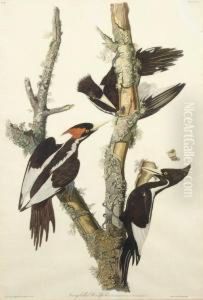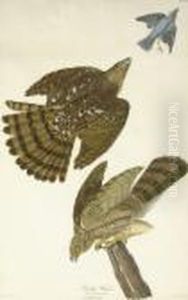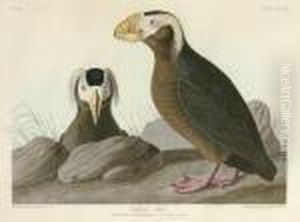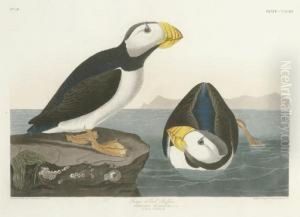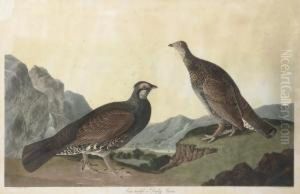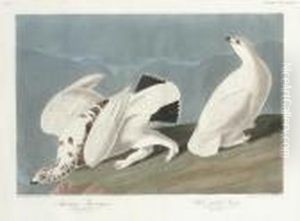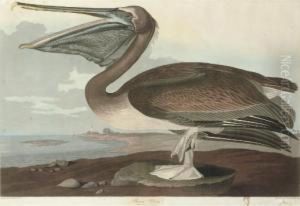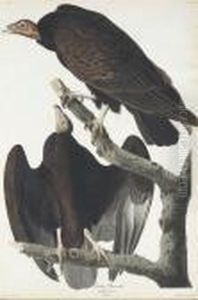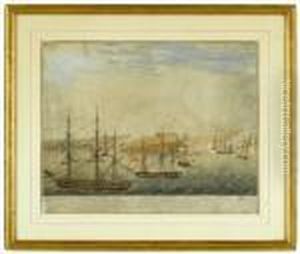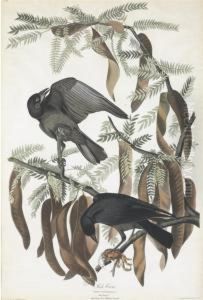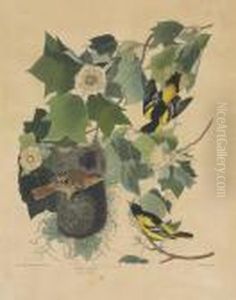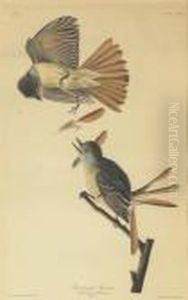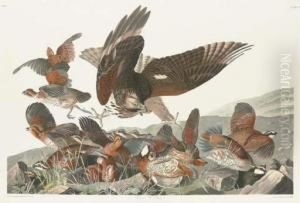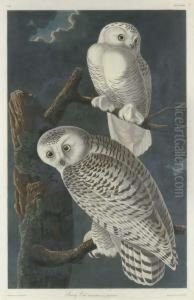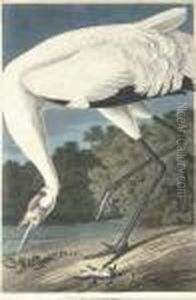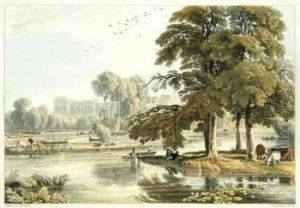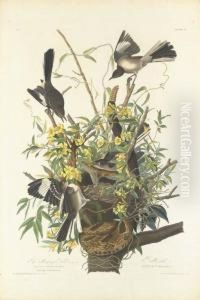Robert I Havell Paintings
Robert Havell Jr. was an English engraver, printer, and publisher, best known for his collaboration with the American ornithologist and painter John James Audubon on the creation of the 'The Birds of America', which is considered one of the finest ornithological works ever completed. Havell was born on November 25, 1793, in Reading, Berkshire, England, into a family with a strong artistic tradition. His father, Robert Havell Sr., was also an engraver and publisher.
After training with his father, Havell Jr. began his career by working on a variety of engraving projects. He quickly established himself as a skilled artisan in the field. In 1827, he began working with Audubon on 'The Birds of America'. Havell's role in the project was substantial; he was responsible for etching, printing, and coloring the plates. The collaboration lasted until 1838, and the resulting work was a massive folio of 435 hand-colored, life-size prints, made from engraved copper plates measuring around 39 by 26 inches. This monumental work is often hailed for its scientific accuracy and artistic beauty, blending natural history with fine art.
The success of 'The Birds of America' established Havell's reputation. In 1839, he emigrated to the United States, settling in Ossining, New York, where he continued his work as an engraver and also became a successful landscape painter. His paintings often depicted the Hudson River and the surrounding landscape, capturing the natural beauty of the area.
Havell also became involved in the American art community, becoming a member of the National Academy of Design in New York City. Throughout his career in the United States, he continued to work on a variety of projects, including landscapes, city views, and historical prints.
Robert Havell Jr. passed away on November 11, 1878, in Tarrytown, New York. His legacy lives on through his contributions to 'The Birds of America', which remains a landmark in both the art and scientific communities, as well as through his own paintings, which are appreciated for their detailed and picturesque portrayal of the American landscape during the 19th century.

